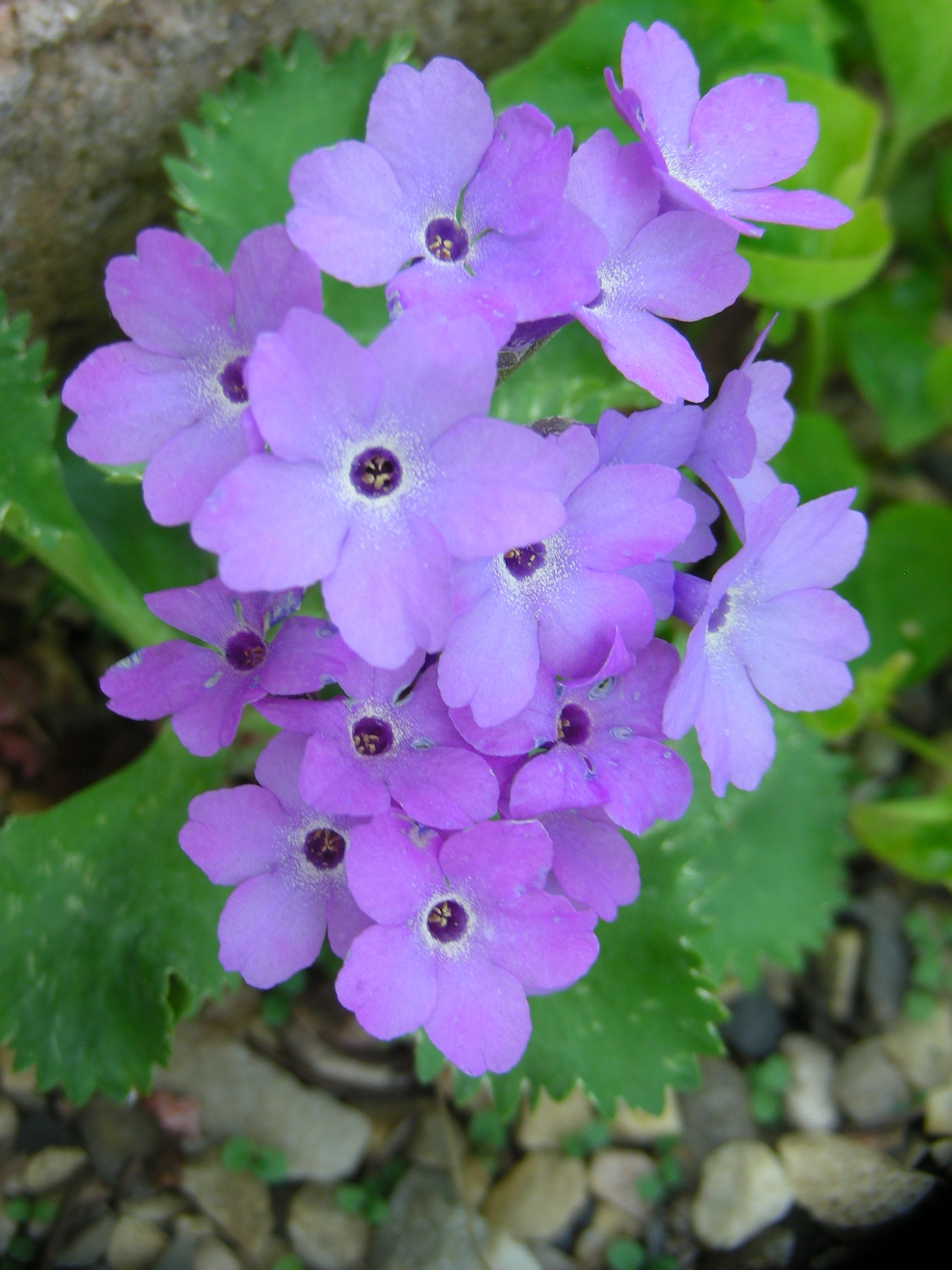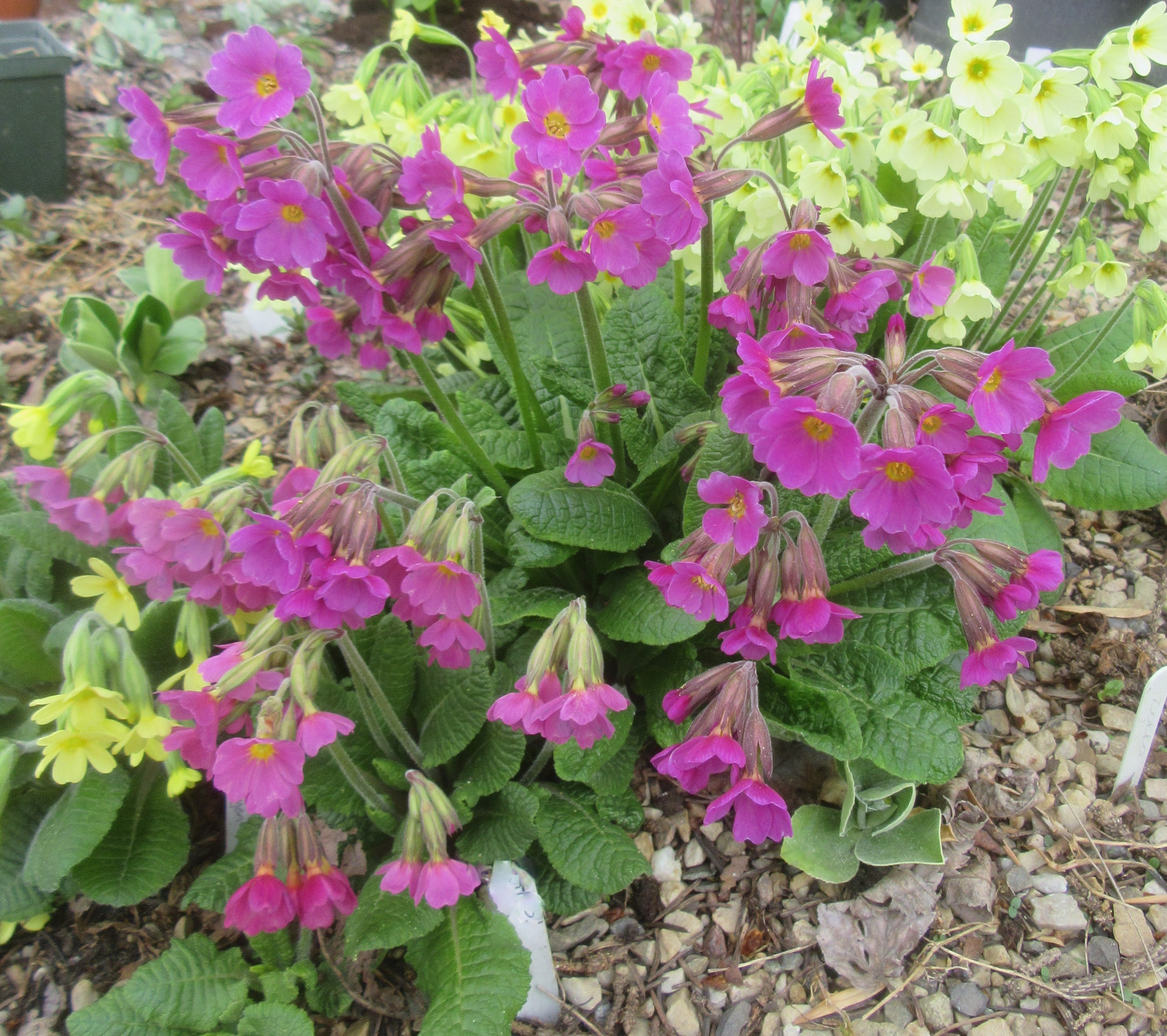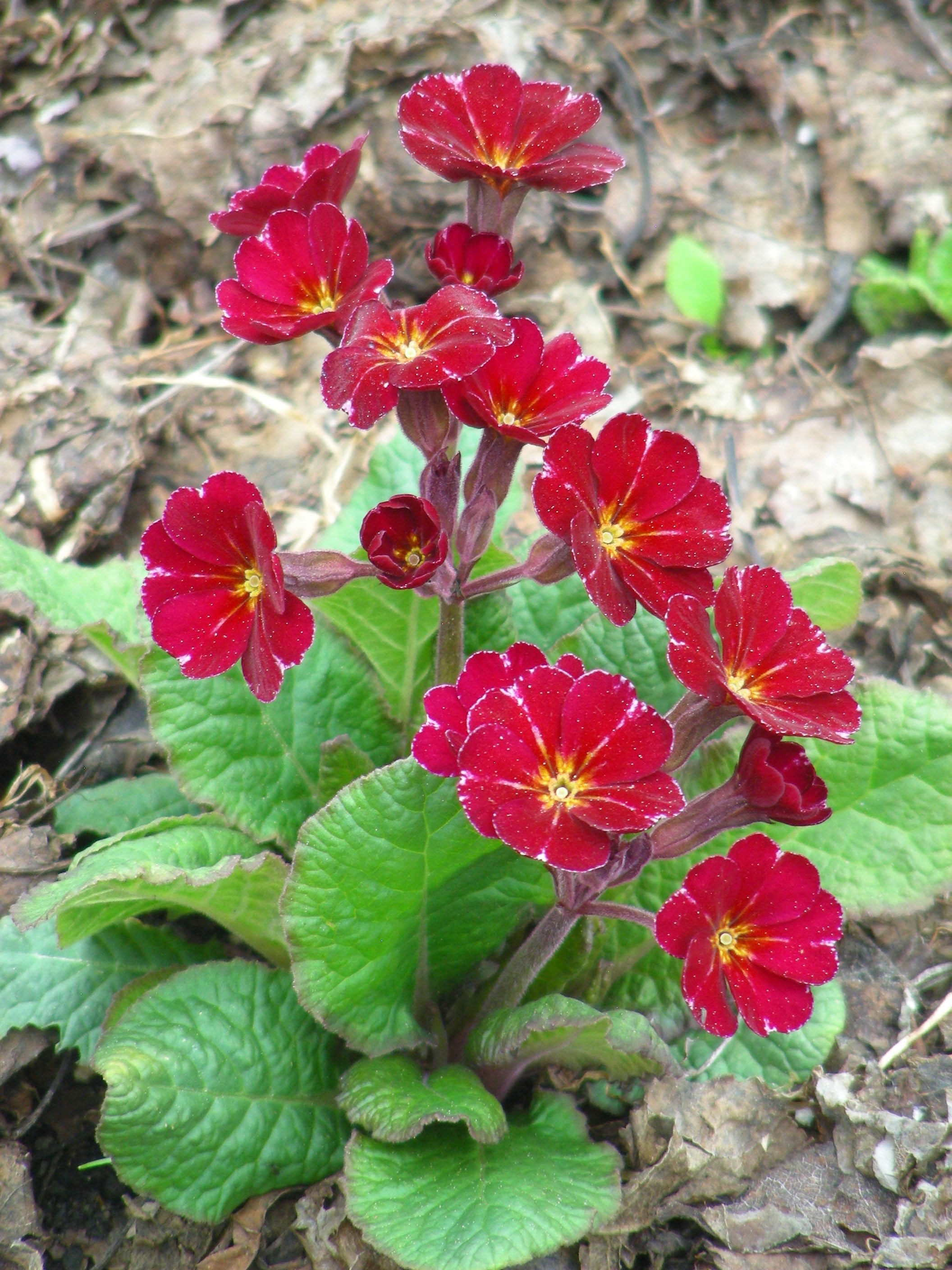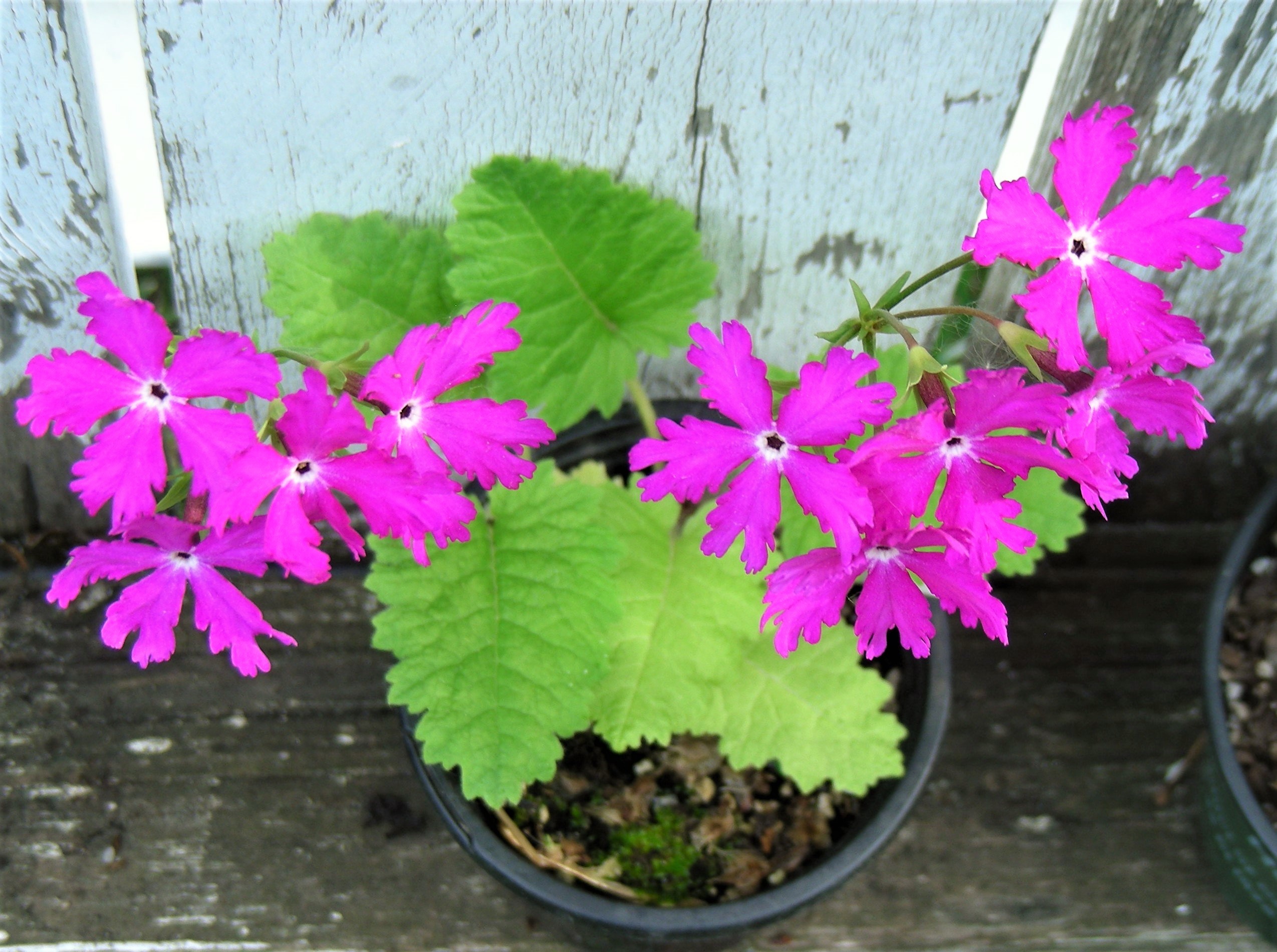Auriculas are in the previous post (scroll down). Here are some of last year’s better photographs of other Primulas in the gardens.
First up, Primula marginata seedlings, and (right, with deeply toothed leaves) the named selection ‘Linda Pope’ — 110 years old and going strong.



Marginatas have toothed leaves edged with white or yellow farina. Marginata seeds are not as easy to start as auricula seeds. If I get five seedlings from 30 seeds, I’m happy. More seeds might germinate after a second or third winter, but by then the pot is overgrown with moss. Seedlings are very slow-growing at first, but once they reach flowering size, they can increase quickly, producing several new rosettes (or offsets) each year. Some plants become sprawling and leggy with age. Bare “branches” can be pinned down with wire and covered with grit, cut off and started as new plants, or left to trail down a rocky slope, a wall, or the side of a trough.
Yellow Primula veris and red hybrids with P. veris form. Here, these are undemanding plants. They want moist soil, a leaf-mould mulch, and leafy shade to shelter them from strong sunlight. These are under the long, arcing branches of rose bushes.



Primula elatior, the oxlip, has yellow flowers. Flowers of the subspecies meyeri, sometimes known as Primula amoena, are purple. This flower seems too pink to be called purple, so it may not be a true meyeri/amoena. One of these years, I will find a source of wild-collected seed and grow some good purple oxlips.

Here are the Irish Juliana primrose ‘Dark Rosaleen’ and two seedlings from its seeds (not two pictures of the same seedling, are they?). The pollen parent was a dark red polyanthus with some red in the leaves, perhaps a Garnet Cowichan. ‘Dark Rosaleen’ produces few seeds. From the dozen I started, three or four grew into winter-hardy plants that flowered in their second year. In 2020, I pollinated ‘Dark Rosaleen’ with these seedlings, and pollinated the seedlings with ‘Dark Rosaleen.’ Will there be more pronounced striping in the next generation?



Leaves of these ‘Jessica’ strain polyanthus (from Jelitto) are similar in colouring to those of ‘Dark Rosaleen’.


This tray of primroses, a mix of polyanthus and acaulis types, did not get planted out into the garden, and the plants have rooted through the trays. Bottom left is an Amethyst Cowichan. I have had Amethyst Cowichan barely survive a single winter, and once before barely survive a winter and barely bloom in spring. I am unlikely to disturb this one, by far the best my garden has seen.

Barnhaven’s ‘Pixies’ have Amethyst Cowichan parentage. They are much hardier and more robust.

Primula denticulata (front), Primula matthioli (back) and Fritillaria meleagris. The leaves in the centre, stealing the focus, are Primula sieboldii.

It was another good year for Primula sieboldii. the plants grew large and flowered lavishly and built up thick roots to take them through the winter. A good year is cool and wet, or relatively so. A normal year is not cool and wet, so two good years in a row is remarkable. First, two named cultivars, ‘White Wings’ and “Pretty Red Wing,’ and then a bunch of seedlings.








Primula laurentiana, a small plant in the corner of an alpine planter. Left to self-sow, its seedlings would soon fill the planter.

Another North American, Primula rusbyi likes this spot among the auriculas (Bailey Boy behind; Fabuloso in front).

This large polyanthus came from seed out of the white-flowered Juliana primrose ‘Dorothy,’ also a large polyanthus. The dark purple flowers underneath it are another Juliana seedling, an acaulis type, that will have to be moved. (I know, I said the same thing last year. ) In front are Primula frondosa and the striped auricula ‘Robin Hood.’

